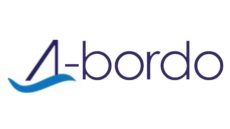The “Regulation that regulates radiocommunications on board Spanish civilian ships” identifies the equipment that pleasure boats must carry, according to the navigation zones in which they are authorized to navigate. The equipment consists of fixed radio stations (in VHF and OM, with Digital Selective Calling – LSD), Inmarsat, portable VHF stations, NAVTEX terminals, radio beacons (RLS – EPIRB), radar transponders (RESAR – SART), and system satellite positioning system (GPS). The greater the distance from the coast that can be navigated, the more complete the equipment must be. Although a boat does not require certain equipment, it is always advisable to go beyond the regulations.
Remember that:
For your radio equipment, you must request the MMSI number () and the corresponding Ship Station License from the General Directorate of the Merchant Marine. The efficiency and speed of response of rescue facilities depend, to a great extent, on the correct transmission of a distress call. () Maritime Mobile Service Identification Number. (RLS- EPIRB)
It is necessary to know how to use the equipment and know the procedures.
THE GLOBAL MARINE SAFETY AND RELIEF SYSTEM (GMDSS)
The GMDSS issues automated distress calls that go directly to Rescue Coordination Centers and Coastal Radio Stations, thanks to the use of digital radio technology and satellite links.
Consult and comply with the GMDSS implementation deadlines in the recreational fleet, according to the authorized navigation areas for your vessel.
MAIN MEDIA USED BY GMDSS
LOSS LOCATION RADIO BEACON
The international satellite system COSPAS-SARSAT and GEOSAR (stationary) captures the emergency signals emitted by radio beacons. These are activated automatically, when submerging in water, or manually.
The radio beacons that emitted in 121.5 Mhz were decommissioned in 2009 and all already emit in the 406 Mhz frequency. The reason is that the 406 Mhz have more power and include a Unique identification code that personalizes the owner boat. The models equipped with GPS (or connected to the GPS of the boat by infrared), transmit the exact position of the emergency. A satellite of the constellation picks up the signal and forwards it to ground stations, activating the response.
THE GLOBAL MARINE SAFETY AND RELIEF SYSTEM (GMDSS)
SALVAMENTO MARÍTIMO RESPONDS TO ALL EMERGENCIES FROM A BEACON.
To make the beacon effective it is important to:
Register the radio beacon at the time of its acquisition, following the regulatory procedures so that the emergency signal incorporates the identification of the vessel.
The model must have flashing light and a signal (acoustic and / or light) that indicates its activation.
Place the radio beacon and its housing in a clear and protected place on the deck from where it can freely rise to the surface in the event of sinking (*). Never navigate with the radio beacon stored inside a “closet”.
Treat it with care and avoiding blows.
Scrupulously respect the inspection deadlines (battery and hydrostatic drain).
Check the battery status before setting sail.
Do not manipulate the radio beacon for no reason, to avoid accidental activation.
Do not try to recharge or replace the battery yourself: it must be done by an authorized technical service
If it is activated for no reason, urgently notify Maritime Rescue to deactivate the search operation.
(*) It is advisable to move the radio beacon away from radars, radio antennas or loudspeakers, as it may be activated unintentionally.
THE VHF
VHF radio is the standard radio communication system in the recreational fleet. Compared to other frequencies (OC and OM), its range is relatively short and depends on the propagation conditions in the atmosphere. As the waves travel in a straight line, any obstacle can stop them.
VHF CHANNEL 16 IS RESERVED FOR SAFETY AND DISTRESS CALLS. SHOULD NEVER BE USED TO CONVERSE.
In GMDSS, the VHF uses Digital Selective Calling (DSC) on Channel 70. It is an automated system for the transmission of distress calls that guarantees their reception by the maritime rescue services (if they are within the range of the Digital VHF – 40/50 miles) and by other nearby vessels and vessels.
The great advantage of calling for help with LSD is that all you have to do is press a button.
ALL CREW MEMBERS MUST BE ABLE TO USE VHF AND SELECTIVE DIGITAL CALLING (LSD).
RADAR RESPONDER (RESAR – SART)
Once activated, automatically or manually, it reacts upon receiving (being interrogated) a radar signal at 9 Ghz, responding with a sweep or burst signal to be located. The RESAR is very useful from a survival raft to guide, quickly and accurately, the rescue services to our position.
CELL PHONE?
Mobile telephony is not included in internationally regulated procedures, it is not a substitute for radio equipment and it should not replace VHF or LSD to make a distress call. The reasons are:
Neither coverage nor scope is reliable at all times and under all circumstances.
You can call to the mainland, but not communicate simultaneously with nearby boats that would give us quick help. Something that the VHF does, since it makes a general call received by all the stations within its reach, on board ships or on land, which keep listening on the distress channels and frequencies.
Even if you contact Salvamento Marítimo by phone, you must inform your exact position since it is not possible to know from what point you are calling. On the contrary, when receiving a distress call by radio, the marine rescue service can automatically obtain the geographical coordinates of the place where you are.
However, and despite its shortcomings, mobile telephony is an interesting complement for security.
Information from
MARITIME RESCUE
www.salvamentomaritimo.es

